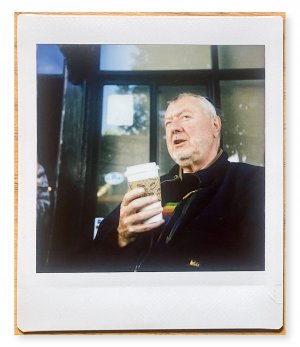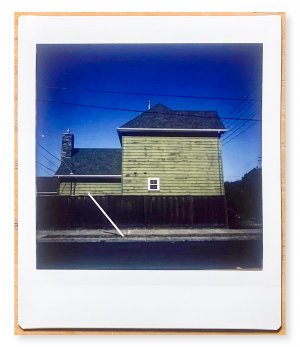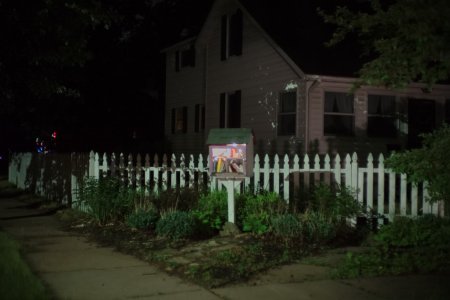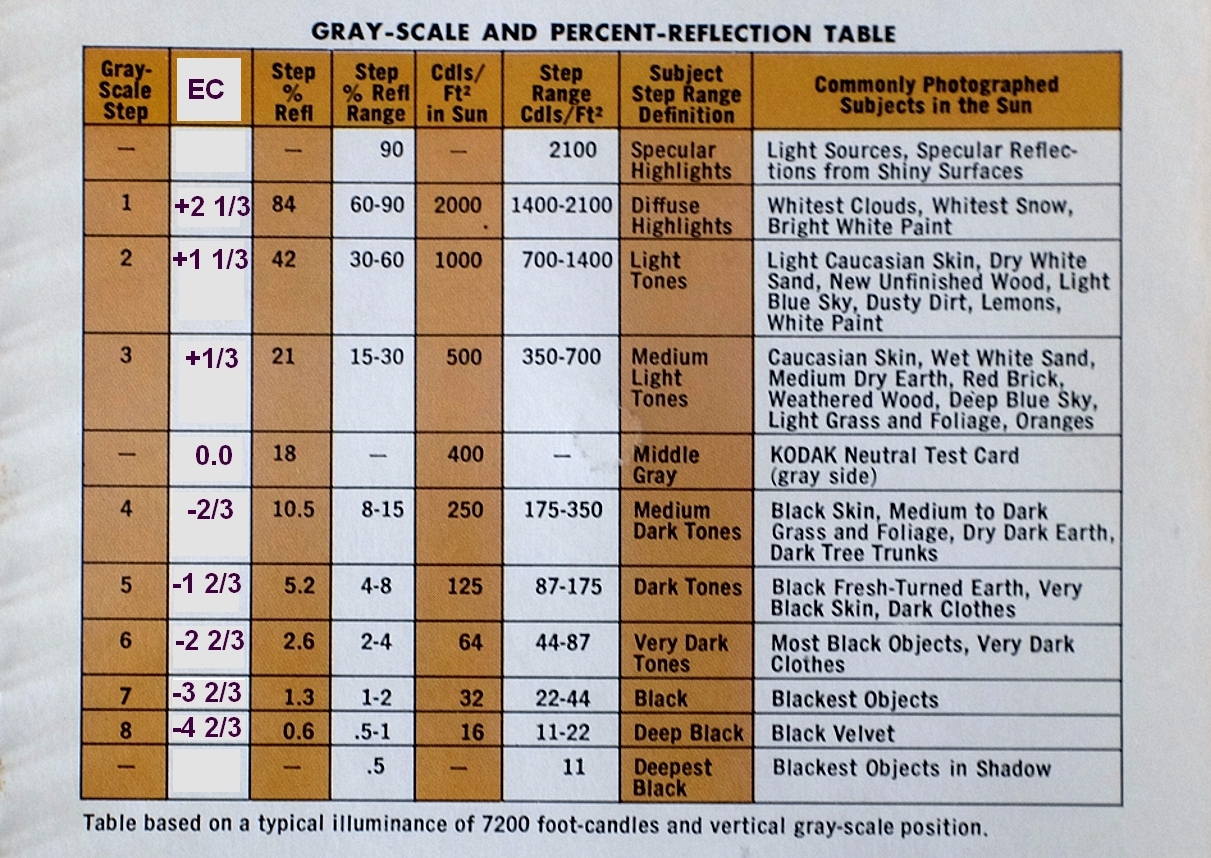raydm6
Yay! Cameras! 🙈🙉🙊┌( ಠ_ಠ)┘ [◉"]
There are a lot of grey areas to this argument.
Let me reflect on this a bit to avoid causing an incident and diffuse the situation. I wouldn’t want to be put on the spot.
Arguments - pro and con - could move the needle either way.
Anyway you look at it, you need to keep a sunny disposition and stop creating a negative overcast - keep it light.
Don’t cloud your judgement, and stay in the zone. And don’t expose yourself to criticism.
…And, give lots of latitude.
Arguments like this could be driven to extinction.
Let me reflect on this a bit to avoid causing an incident and diffuse the situation. I wouldn’t want to be put on the spot.
Arguments - pro and con - could move the needle either way.
Anyway you look at it, you need to keep a sunny disposition and stop creating a negative overcast - keep it light.
Don’t cloud your judgement, and stay in the zone. And don’t expose yourself to criticism.
…And, give lots of latitude.
Arguments like this could be driven to extinction.
Last edited:
sagging_gut
Newbie
What Obi Wan really said "Luke! The Targeting computer is a sophisticated piece of equipment that helps you hit the target" One of the funniest lines from Thumb Wars.
With digital- less latitude than film More like shooting slides. Shooting B&W negative film, processing it yourself- you would have to be way off to make it unrecoverable. Like hitting the Death Star at all instead of just the exhaust port. Digital- more like slide film. With either, use the meter and know when it is not going to be accurate.
Not sure of the claim that digital photographs are closer to shooting slides... these modern digital cameras have sensors capable of 15 stops dynamic range. Velvia has, what, 8? not to mention no worries of reciprocity failure
I think for the younger generation, it's important to practice with a meterless camera. That being said, the misinformation that is spread on places like Reddit and YouTube (where the new film shooters are learning...) is astounding. Film being pushed 5 stops and developed for box speed etc. The apparent need for a top-of-the-line camera when a K1000 was a semi-affordable workhorse. Professional cameras available for a fraction of what they were once worth but, no, you need something that makes light leaks.
I suppose that I digress...
Digital cameras preserve shadow detail quite well, and have excellent high ISO. They tend to blow highlights more than film, which has a nice response curve at the high end. Digital cameras have a linear response, which holds close to saturation.
froyd
Mentor
I want to highlight your post because your preference for a meditated response exposes the shadows and stands in stark contrast (think 5EV range) with some of the "shoot from the hip" advice above. All this wisdom...and you did not even ask for compensation.There are a lot of grey areas to this argument. Let me reflect on this a bit to avoid causing an incident so as not to be put on the spot.
Godfrey
somewhat colored
Godfrey, c'mon, post those new MiNT photos! I'm dying to see what that camera can do!
Getting there. One pack of color came with the camera, I had another pack of color and a pack of B&W.
First pack of film I made one or two decent photos, snaps of my friends at breakfast last Thursday morning. A couple worked nicely ...

Second I was in experimentation mode on a walk ... again, a couple came out nice.

I sacrificed the B&W to exposure experiments, learning the film response on manual exposure and then the camera's Auto modes.
A box with 6 packs of color and 4 packs of B&W just arrived, and I now feel like I understand the film and the camera well enough, so I can go shooting.
G
(btw: these inserted photos were made with the iPhone 11 Pro hand held, not my usual instant film copy setup, so I apologize for the rather poor quality.)
ptpdprinter
Mentor
Why do you think it is important for the younger generation practice with a meterless camera? I would rather see them learn how to use a meter properly. Learning to print with correctly exposed negatives is hard enough. Of course, if they are just going to scan their negatives, they can always fix less than optimum exposure in post...sort of.I think for the younger generation, it's important to practice with a meterless camera.
I don't know any large format photographers, other than those doing wet plate work, who don't use a meter. Perhaps because they know that the quality of the negative is so important.
Last edited:
raydm6
Yay! Cameras! 🙈🙉🙊┌( ಠ_ಠ)┘ [◉"]
All this wisdom...and you did not even ask for compensation.
Shoot! I didn’t factor that in!
Darthfeeble
But you can call me Steve
Not for me, BUT! That skill set brought us "Moonrise over Hernandez" and who knows how many other master shots.
wlewisiii
Just another hotel clerk
Ah, highlights. Was trying to fix that problem just a few moments ago. A "little free library" with lights inside it while driving to work at 22:30. Canon 50/1.4 wide open, ISO6400 & 1/12 on the M 240... Took a lot of tweaking (to my idea of tweaking) to get it toned down to a reasonable level.Digital cameras preserve shadow detail quite well, and have excellent high ISO. They tend to blow highlights more than film, which has a nice response curve at the high end. Digital cameras have a linear response, which holds close to saturation.

Pál_K
Cameras. I has it.
I have a bunch of large format color negative sheets. Expensive! I will definitely use a meter for those.
I also bought some medium format transparency film on a whim; I’ll use a meter for those as well.
Back when I was learning the Zone System and wanted to make Ansel-like landscapes, I’d use Kodak Tech Pan at ISO 12, developed in Technodol, and then printed to 16x20. Great stuff. I used a Pentax Spotmeter to derive the zones in each photo and was pleased how well and how sensible the system is. To have the best possible options for printing, the negative has to have good density, so having a meter to read your darkest and lightest areas is a valuable asset.
But for Exaktas, Leicas, even Nikon F2, I don’t use a meter.
I also bought some medium format transparency film on a whim; I’ll use a meter for those as well.
Back when I was learning the Zone System and wanted to make Ansel-like landscapes, I’d use Kodak Tech Pan at ISO 12, developed in Technodol, and then printed to 16x20. Great stuff. I used a Pentax Spotmeter to derive the zones in each photo and was pleased how well and how sensible the system is. To have the best possible options for printing, the negative has to have good density, so having a meter to read your darkest and lightest areas is a valuable asset.
But for Exaktas, Leicas, even Nikon F2, I don’t use a meter.
Retro-Grouch
Well-known
Well, despite being copied with the phone, the sharpness is impressive. Thanks for posting (and for giving me GAS)!Getting there. One pack of color came with the camera, I had another pack of color and a pack of B&W.
First pack of film I made one or two decent photos, snaps of my friends at breakfast last Thursday morning. A couple worked nicely ...
View attachment 4822708
Second I was in experimentation mode on a walk ... again, a couple came out nice.
View attachment 4822709
I sacrificed the B&W to exposure experiments, learning the film response on manual exposure and then the camera's Auto modes.
A box with 6 packs of color and 4 packs of B&W just arrived, and I now feel like I understand the film and the camera well enough, so I can go shooting.
G
(btw: these inserted photos were made with the iPhone 11 Pro hand held, not my usual instant film copy setup, so I apologize for the rather poor quality.)
Joao
Negativistic forever
I don’t rely on my own meterless evaluation of light conditions
- in indoors photography.
- in high contrast scenes (bright áreas and dark shadows)
- immediately after moving from a dark place to a bright sunny área
While I always try to guess the speed and aperture, I always carry and use a lightmeter, especially after my cataract surgery - the world is not as bright as I see it…
Regards
Joao
- in indoors photography.
- in high contrast scenes (bright áreas and dark shadows)
- immediately after moving from a dark place to a bright sunny área
While I always try to guess the speed and aperture, I always carry and use a lightmeter, especially after my cataract surgery - the world is not as bright as I see it…
Regards
Joao
cboy
Well-known
I could never rely on in-camera metering especially earlier pre 2000s, and so for me reading light along with learned experience with a off camera lightmeter gave me consistent results.
To the present day metering aids have improved tremendously imo. You have highlighted centred metering for ETTR and waveforms that almost certainly give correct exposure. Coupled with higher threshold in exposure latitude for most modern day cameras to correct in post it's so easy now lol.
I love my sigma fp having waveforms
However having an off camera meter is always handy for tricky lighting situations
To the present day metering aids have improved tremendously imo. You have highlighted centred metering for ETTR and waveforms that almost certainly give correct exposure. Coupled with higher threshold in exposure latitude for most modern day cameras to correct in post it's so easy now lol.
I love my sigma fp having waveforms
However having an off camera meter is always handy for tricky lighting situations
agentlossing
Well-known
Yes, making highlight-weighted metering super useful where it appears. Also reinforcing the usefulness of an optical viewfinder, since an EVF crushes all the shadows which you're going to later raise in PP.Digital cameras preserve shadow detail quite well, and have excellent high ISO. They tend to blow highlights more than film, which has a nice response curve at the high end. Digital cameras have a linear response, which holds close to saturation.
froyd
Mentor
I like shooting meterless bodies not for any skill involved, but because of the feeling of freedom I get. Of the M-mount cameras I owned, the Zeiss Ikon, with it's AE, is the one I liked the least. Even in manual mode, its blinking red LED were a constant invitation to second-guess my exposure or at very least an annoying detail that took away from the immersion with what was within the frame lines. I'm sure blinking LEDs and needles sticking into the frame don't bother a lot of people (just as my kids claim they can study perfectly well with they cellphones constantly beeping next to them  ). One way around it would be to use external VFs, but I preferred to go with an M4 instead.
). One way around it would be to use external VFs, but I preferred to go with an M4 instead.
It's not just about the clutter in the viewfinder. I also also enjoy the carefree way of shooting where I take a couple of incident light readings in a space, and then shoot for the next several frames with just a few exposure values in my head (deep shadows, open shade, contre jour etc.) In a way, this is where shooting a meterless body for me is very similar to shooting with a modern matrix metering camera, where exposure is not a concern and you can just focus on composition. Depending on the subject matter, of course, this approach is not always workable.
It's not just about the clutter in the viewfinder. I also also enjoy the carefree way of shooting where I take a couple of incident light readings in a space, and then shoot for the next several frames with just a few exposure values in my head (deep shadows, open shade, contre jour etc.) In a way, this is where shooting a meterless body for me is very similar to shooting with a modern matrix metering camera, where exposure is not a concern and you can just focus on composition. Depending on the subject matter, of course, this approach is not always workable.
markjwyatt
Well-known
Meterless cameras are important to me because many of my cameras are meterless. I am fine with a handheld meter most of the time; though some of my M42 cameras with in-camera meters are nice to use, and the built-in meter gets quicker results. Sometimes, even with those, I still bring a handheld meter, but do not feel I have to.
pvdhaar
Peter
Using a meterless camera has learned me to not ride the exposure. Either go sunny-16 or measure the light once and only adjust when the it changes.
CMur12
Well-known
I like the clean simplicity of a meterless finder that shows nothing but the image. This is what I get with my TLRs and with a Pentax H1a.
At the same time, I really like TTL metering. I learned to use the standard center-weighted averaging meters in the cameras of yore to get perfectly exposed slides. I often wished that I had a camera that also offered spot-metering, and I even bought a handheld spot-meter. I rarely needed or used it, however, as I knew how to employ the center-weighted averaging meter to get what I wanted.
I like aperture-priority automatic, as long as I also have AEL (auto exposure lock). Without AEL, any automatic metering is useless to me. I scan the scene for light values, then lock exposure on the part of the scene that gives me the reading I want.
I've never understood why anyone would bother with aperture or shutter-speed automatic and dial in exposure compensation. That takes more time than just metering in manual mode.
Anyway, it's clear that we've all worked out methods/approaches that work for each of us, so more power to all of you who don't do it the way I do!
- Murray
At the same time, I really like TTL metering. I learned to use the standard center-weighted averaging meters in the cameras of yore to get perfectly exposed slides. I often wished that I had a camera that also offered spot-metering, and I even bought a handheld spot-meter. I rarely needed or used it, however, as I knew how to employ the center-weighted averaging meter to get what I wanted.
I like aperture-priority automatic, as long as I also have AEL (auto exposure lock). Without AEL, any automatic metering is useless to me. I scan the scene for light values, then lock exposure on the part of the scene that gives me the reading I want.
I've never understood why anyone would bother with aperture or shutter-speed automatic and dial in exposure compensation. That takes more time than just metering in manual mode.
Anyway, it's clear that we've all worked out methods/approaches that work for each of us, so more power to all of you who don't do it the way I do!
- Murray
Pál_K
Cameras. I has it.
Yes, the “purity“ of my H3v, Exakta, etc., plain groundglass screen provides a view with no distractions and I’ve made my best photos with such cameras. Yet, my geekiness sometimes attracts me to the viewfinders of cameras with interesting ways of showing exposure and settings.I like the clean simplicity of a meterless finder that shows nothing but the image. This is what I get with my TLRs and with a Pentax H1a.
At the same time, I really like TTL metering...
I admire the way different manufacturers have designed their viewfinder information displays - it‘s all the same information, really, just presented in different and sometimes clever ways.
The only time this hasn’t worked well has been in the early days of TTL exposure, where with some cameras part of the light was siphoned from the mirror, thereby resulting in a dimmer viewfinder. The Beseler Topcon Super D (RE Super) did the best job of this, its viewfinder is reasonably bright. Where this technique did not work well, to my dismay, was in the Mamiya Sekor Auto XTL. That viewfinder is dim! A sad discovery for me really, as I lusted after that feature-rich camera in the 1970’s. When I finally saw one a few years ago, it was a great disappointment. Never meet your heroes.
D
Deleted member 82967
Guest
I have an M-A, M3 and a Nikon F (no meter). Why I deem them so important? Because using them teaches how to setup your metering by feel (you will get better at this over time), It teaches you in the beginning to guess exposure but you will get better at this with time, too. I can look at the top of my camera before composing and set the aperture, Shutter speed and even the focus before I even compose. Then I bring the camera up to my eye to compose the shot. Mostly use a 35mm lens. A very pleasurable experience.
I do "cheat" sometimes if I really am clueless about an exposure, I will whip out my iPhone to use an app called light meter.
I am with you.
I know the reflectivity of the dirt around here and more-or-less the varying brightness of the sky diurnal and annual.
This is useful to try and memorize:

Share:
-
This site uses cookies to help personalise content, tailor your experience and to keep you logged in if you register.
By continuing to use this site, you are consenting to our use of cookies.

